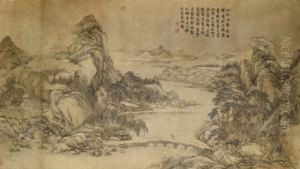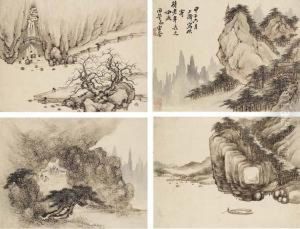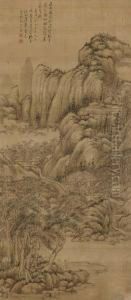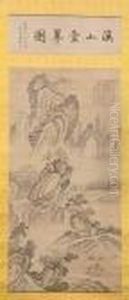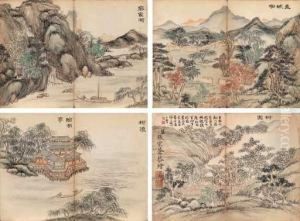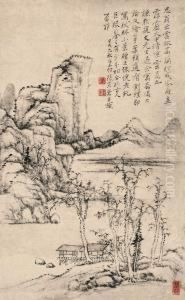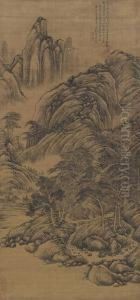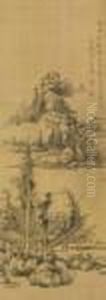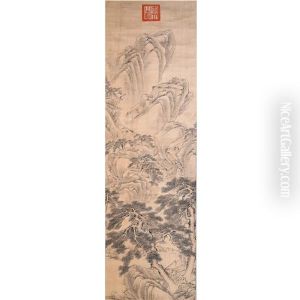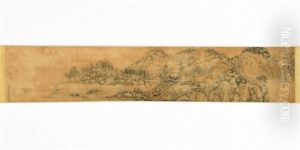Zhang Zongcang Paintings
Zhang Zongcang, born in 1686 and passing away in 1756, was a multifaceted artist from the Qing Dynasty in China, whose expertise spanned across painting, calligraphy, and poetry. His contributions to the Chinese art world are significant, showcasing a blend of traditional Chinese elements with his unique personal style, which has made his work a subject of study and admiration among art historians and enthusiasts alike.
Zhang Zongcang hailed from Jiangsu Province, a region known for its rich cultural history and for producing some of the most renowned artists in Chinese history. Despite the lack of extensive records about his early life and training, it is evident from his works that he was deeply influenced by the literati painting tradition—a style that emphasizes personal expression and scholarly learning over strict adherence to formal techniques. Zhang was not only a skilled painter but also an accomplished poet and calligrapher, talents that were highly regarded and intertwined in the literati artistic tradition.
Throughout his career, Zhang Zongcang developed a distinctive style, particularly in landscape and bird-and-flower painting. His landscapes are often noted for their dynamic brushwork and innovative composition, reflecting a deep understanding of the natural world and a unique interpretation of it. His bird-and-flower paintings are celebrated for their elegance and vitality, capturing the essence of his subjects with seemingly effortless grace. These works are characterized by their refined simplicity and the harmonious integration of poetry and painting, a hallmark of the literati aesthetic.
Zhang's contributions extended beyond his artistic output. He was part of a broader intellectual and artistic community that valued the exchange of ideas and the cultivation of personal expression. Through his paintings, calligraphy, and poetry, he engaged with the philosophical and aesthetic debates of his time, contributing to the evolution of Chinese art. His works, which often included inscriptions and poems, provide insight into the thoughts and emotions of the literati class during a period of significant social and political change in China.
Despite the challenges of his era, including the transition and turmoil within the Qing Dynasty, Zhang Zongcang's art remained a testament to the enduring spirit of the literati tradition. Today, his works are preserved in various museums and collections around the world, where they continue to inspire admiration and scholarly research. Zhang Zongcang's legacy is a reminder of the power of art to capture the complexity of human experience and the natural world, bridging the past and present through the beauty of ink and brush.
